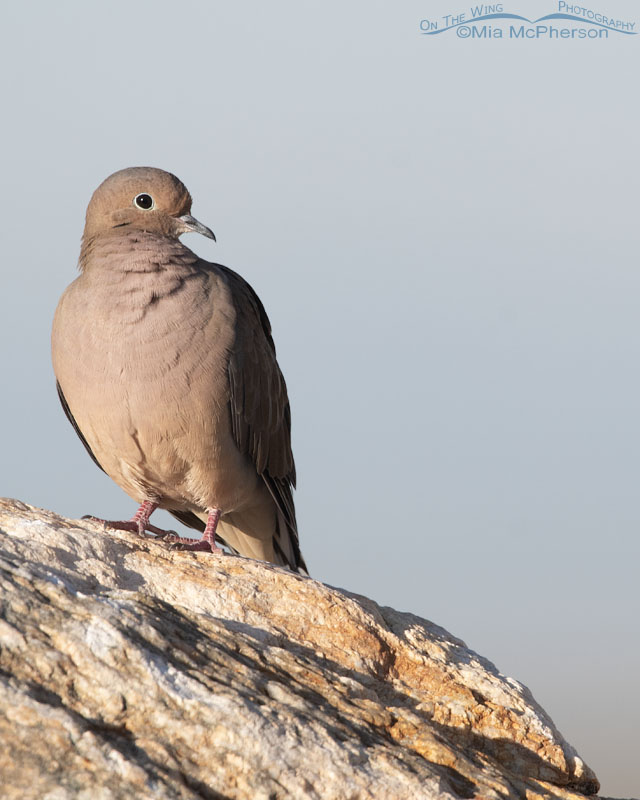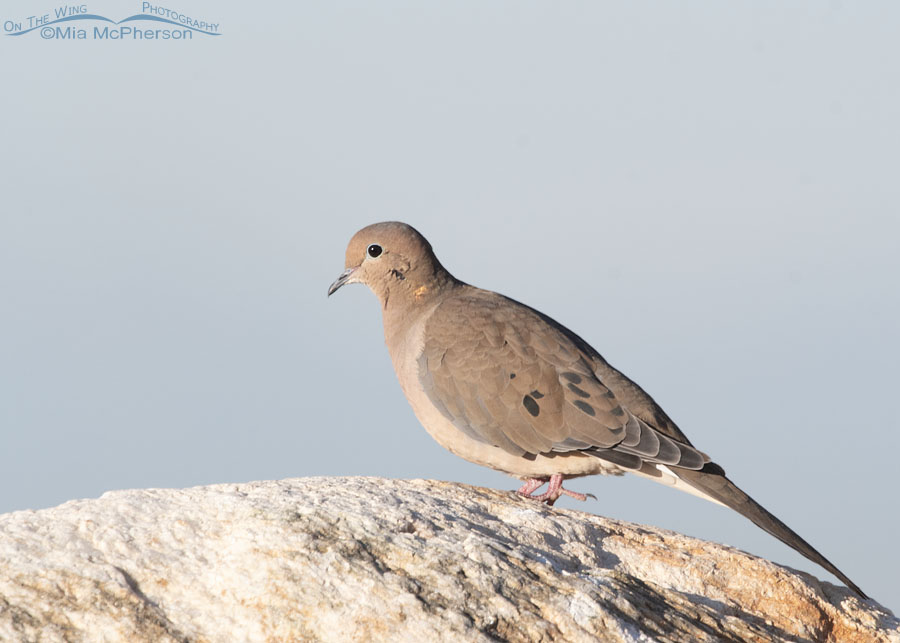Yesterday at Farmington Bay WMA, the first bird I saw through my viewfinder was a male Mourning Dove perched on a boulder, bathed in soft, warm morning light.
 Male Mourning Dove at Farmington Bay WMA – Nikon D500, f7.1, 1/1600, ISO 500, +0.7 EV, Nikkor 500mm VR with 1.4x TC, natural light
Male Mourning Dove at Farmington Bay WMA – Nikon D500, f7.1, 1/1600, ISO 500, +0.7 EV, Nikkor 500mm VR with 1.4x TC, natural light
There were two doves in the area, but only the male dove was out in the open, perched on top of a large boulder. The temperature was around 54°F, and I believe the doves were enjoying the warmth of the rising sun.
Neither of the doves made a sound yesterday while I was focused on photographing the male on the boulder.
 Morning Mourning Dove on a boulder – Nikon D500, f7.1, 1/1600, ISO 500, +0.7 EV, Nikkor 500mm VR with 1.4x TC, natural light
Morning Mourning Dove on a boulder – Nikon D500, f7.1, 1/1600, ISO 500, +0.7 EV, Nikkor 500mm VR with 1.4x TC, natural light
Male Mourning Doves exhibit a bluish-gray cap that extends down their nape, accompanied by a rosy tint on their face, breast, and neck. In contrast, females feature more of an olive-gray cap and nape, with a brownish hue on their faces, and their breasts lean towards a tanner shade rather than being rosy.
I was delighted to have this male dove in my viewfinder in the warm morning light. As frequently as I find this species, I don’t have as many images of them in my galleries as I would like to have. I’ve found that they can be quite skittish at times, so when they are cooperative, I try to take advantage of the opportunity to photograph them.
After I photographed this male, he disappeared behind the boulder. A few seconds later, I could see the pair of doves walking side by side on the ground behind the boulder. I quietly thanked the doves and went to look for more birds at Farmington Bay.
Life is good.
Mia
Click here to view more of my Mourning Dove photos plus facts and information about this species.


I love the contrasting textures in this pic and the composition is wonderful. Thanks Mia.
I find mourning doves to be beautiful. Thanks for sharing.
Gorgeous light – and birds.